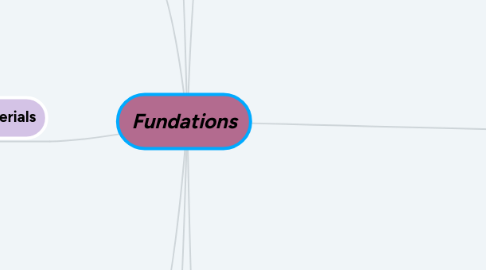
1. Other Resources
1.1. Letter Sound Flash Cards with Pictures
1.1.1. Letter sounds like "-ing"were written on a flashcard with a picture of a ring under it to remind students that the word "ring" includes "-ing" thus, reminding them how to use the letter sound "-ing".
2. Technology Used
2.1. Smart Board
2.1.1. The SmartBoard was used for students to "mark up" the word and word sounds that they were practicing: glued sounds, digraphs, etc.
3. Student Engagement
3.1. Excitement
3.1.1. Students were eager and engaged to answer and share all the answers that they had come up with out loud with the class.
4. Assessment
4.1. Formative Assessment
4.1.1. Thumbs Up/Thumbs Down Method-If students agree with what their classmates said
4.1.2. Calling on Students-The teacher gives multiple students a chance to answer every question
4.2. Summative Assessment
4.2.1. Tests-At the end of every unit the children are given a formal individual assessment
5. Materials
5.1. Letter Boards
5.1.1. Letter boards have a magnet with every letter and letter sound on it so that the students an practicing making words and putting words together
5.2. Dry Erase Boards
5.2.1. The class comes up with sentences using the new letter sound/word and writes them on their dry erase boards for practice before putting it into their workbooks.
5.3. "Wild Ild" Workbooks
5.3.1. These workbooks are where students practice writing words after the teacher teaches them a new letter sound.
6. Overall Description
6.1. Ability
6.1.1. It seems like the students are of multiple academic ability levels. However, it is evident that the other classes in the surrounding pods are of higher academic ability. Students in the class are often pulled out of class by another teacher. Teacher often has to redirect and "coach" her students.
6.2. Age
6.2.1. All the children in the classroom are either 7 or 8
6.3. Culture
6.3.1. The majority of the class is caucasian (19 students), one latino student, and one asian.
6.4. Gender
6.4.1. There are 13 boys and 8 girls in the class
6.5. Socioeconomic Status
6.5.1. All the students seem to be from either a middle/ or high socioeconomic status household - Every student has worn a new outfit and new shoes every time I have been present.
7. Instructions
7.1. Content
7.1.1. Breaking down single syllable words, identifying how many syllables are in a word, and whether or not the word has long or short vowels.
7.2. Instructional Strategies
7.2.1. Students, along with their teacher, tap each words sounds out, they also wrote new words in the air with their fingers, or on the ground with their feet.
7.3. Instructional Goals
7.3.1. To help students understand the break down of words: digraphs, consonants, vowels, glued sounds, buddy letters, short/long sounds, and closed syllables.
8. Standards
8.1. Standard - CC.1.1.2.D
8.1.1. Know and apply grade-level phonics and word analysis skills in decoding words. • Distinguish long and short vowels when reading regularly spelled one-syllable words. • Decode two-syllable words with long vowels and words with common prefixes and suffixes. • Read grade-level high-frequency sight words and words with inconsistent but common spelling-sound correspondences. • Read grade-appropriate irregularly spelled words.
8.2. Standard - CC.1.4.2.F
8.2.1. Demonstrate a grade-appropriate command of the conventions of standard English grammar, usage, capitalization, punctuation, and spelling. • Capitalize proper nouns. • Use commas and apostrophes appropriately. • Spell words drawing on common spelling patterns. • Consult reference material as needed.

